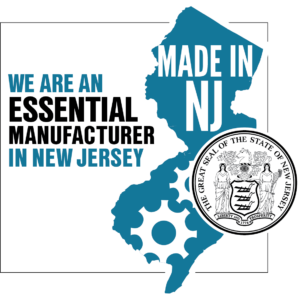5 Things You Should Be Including in Your Request for Cutting Quote
There are 5 key areas that should never be left blank when filling out your request for cutting quote. Do you know what they are?
There are 5 key areas that should never be left blank when filling out your request for cutting quote. Do you know what they are?
A fully complete RFQ tells a story about the buyer, the company, and the end product and its use — information we can use to provide the right quote (and the right price).
Learn how precision cut off and stamping compare in achieving distortion-free flatness, a sharp edge, and the precise exterior diameter needed for a spacing ring.
Learn 7 simple rules to help ensure that calibrated measuring yields accurate and consistent results for your small parts manufacturing.
For measuring and inspecting the ID of small parts tubing, pin gages or optical measurement systems help ensure that small tubing will meet specifications.
When a single part has multiple tolerances that conflict, the tighter, more challenging tolerance must guide production and ultimately drives the part’s cost.
With a metric tolerance chart, you need to account for the upper and lower tolerance spec limits when converting between standard and metric measurements.
Learn about the role that tight tolerance plays in optimizing for manufacturability, and how to specify tolerances to ensure part quality and control costs.
Learn the key parameters for choosing a method of 2-axis precision cut off of metal parts based on part type, material type, and part dimensions.
While laser cutting can produce a small kerf and tight tolerances, other precision cutting methods may be preferable for 2-axis cutoff of small metal parts.
The metal shearing process can be quick and inexpensive for cutting some simply shaped parts, but it has disadvantages including burrs and end deformation.
Get answers to common questions about dissimilar metals regarding high and low conductivity electrodes and friction stir in the construction of an electrode.
Choosing the right resistance spot welding electrode for an application depends on understanding critical properties of the different electrode materials.
Learn about the variables to consider when choosing the best resistance welding electrode material for specific resistance spot welding applications.
When choosing a resistance welding electrode for any application, a thorough understanding of material properties helps to avoid production line issues.
Learn how best practices as well as material and design considerations have an impact on the life and effectiveness of resistance spot welding electrodes.
Learn why resistance welding electrodes require a material with the right combination of thermal conduction, electrical resistivity, and reactivity.
Learn how additive manufacturing (AM) — one of today’s fastest growing technological innovations — is changing the face of contract manufacturing everywhere.
Industry Trend No. 3: Rising labor costs overseas are one factor in the move away from outsourcing and toward reshoring of some businesses and factories.
Industry Trend No. 2: Manufacturing globalization and regionalization provide opportunities for partnership, innovation, competitive advantage, and growth.
Industry Trend No. 1: Increased exporting and global trade has a positive impact on revenue, growth, and competitiveness, while expanding a manufacturer’s customer base.

89 Commerce Rd Cedar Grove, NJ 07009
973 239 1100 sales@metalcutting.com
sales@metalcutting.com
Copyright © 2025 Metal Cutting Corporation
Core Capabilities
Precision Cutting
Grinding & Lapping
Polishing
Machining
Finishing

